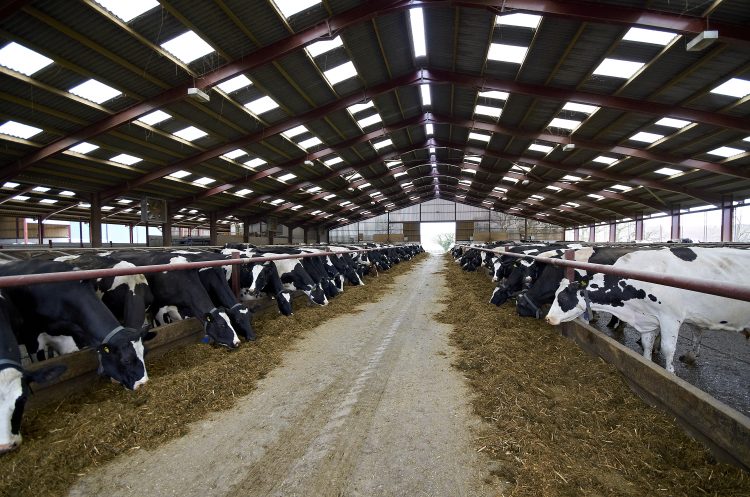Dairy producers looking to optimise herd performance against their feed budget will benefit by including rumen-protected fat supplements in rations, says Dr Richard Kirkland, Global Technical Manager for Volac Wilmar Feed Ingredients.
An essential nutrient in dairy rations, cows typically need 15 to 20 percent of their metabolisable energy (ME) to come from fat which may be equivalent to over 6 percent fat in the ration dry matter (DM) for high-yielding cows.
“These key feed supplements help ensure the fat requirements of the animal are met while also providing a concentrated source of energy without adding to the acid load in the rumen as is the case with starchy cereal energy sources. Looking at the blend of fatty acids within a fat supplement offers the ability for farmers to target specific areas of cow performance to support their milk contract,” explains Dr Kirkland.
Energy density and rumen function
In rations based on forage and cereals, meeting energy requirements with a nutrient-dense and rumen-safe ingredient is essential.
“High-quality silages provide additional energy and nutrients than more-mature cuts, but lower fibre concentrations will reduce rumen buffering effects, which combined with rapidly-fermentable starch sources can compromise rumen pH and lead to an increased risk of acidosis and milk fat depression,” says Dr Kirkland.
Buffer feeding with straw may be an option to slow feed down in the digestive system, but it will also fill the rumen with a low-quality feed bulk that can compromise energy intake and milk protein. The high energy density of fat is an ideal way to increase energy supply without risk of rumen upset, advises Dr Kirkland.
As a macronutrient, fat is energy dense with 500g of a fat supplement like Megalac increasing energy density by 0.5 MJ/kg DM. Compared to cereals, it contains over 2.5 times the energy density while protecting rumen function, and improving milk production and feed efficiency.
Targeting areas of cow performance
Aside from its energy density benefits, individual fatty acids that make up rumen-protected fat supplements influence the partitioning of nutrients and have differing effects on specific areas of performance. This allows farmers to utilise specific fat supplements to target outputs that will benefit their milk contracts or herd challenges, says Dr Kirkland.
“For autumn calving cows in early lactation, the challenge is to improve body condition score and get back in calf. As a general rule, each one-unit loss in body condition score will reduce conception rates by about 10 percent. During this early lactation period, C18:1 (oleic acid) is the key fatty acid to deliver to the small intestine for absorption as the latest research demonstrates its effect on insulin status, increasing partitioning of energy and nutrients to improve body condition,” explains Dr Kirland.
For cows in the post-peak period of lactation, supplementing with products containing high levels of C16:0 (palmitic acid) will increase the partitioning of nutrients to milk, which in turn will improve milk and milk fat production. However, these high-C16:0 formulations should be used with some caution in early lactation as they may lead to increased production at the expense of body fat stores and cows lose body condition, advises Dr Kirkland. Products such as Mega-Fat 70 have C16:0 fatty acid to improve milk fat but are balanced with C18:1 to provide additional benefits and should be considered in this period.
Rumen-protected fat supplements for a ‘catch-all’ solution
From supporting body condition and conception rates to milk production, meeting energy requirements is essential for the short and long-term performance of a dairy herd, says Dr Kirkland.
“The multi-purpose benefits of rumen-protected fat supplements make them a great catch-all ingredient in dairy rations to give farmers a greater return on investment from their feed inputs,” concludes Dr Kirkland. “There are a lot of feed ingredients that will fulfill one role in a ration – but only rumen-protected fat delivers a highly-concentrated energy source without risk to rumen function, and enabling specific areas of herd performance to be targeted.”























